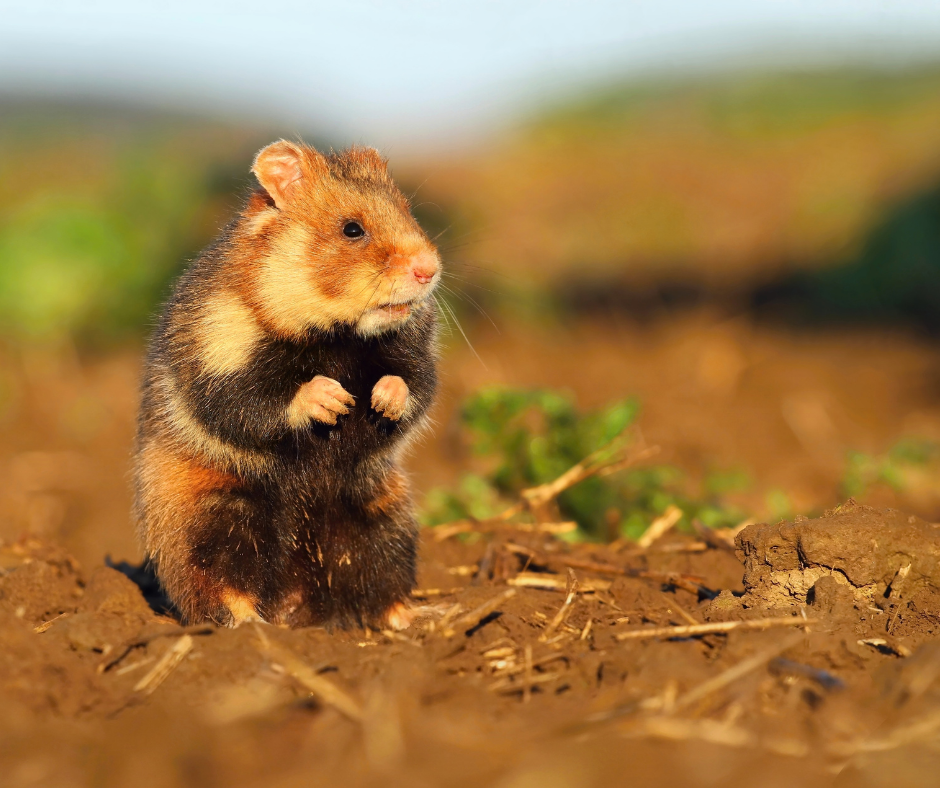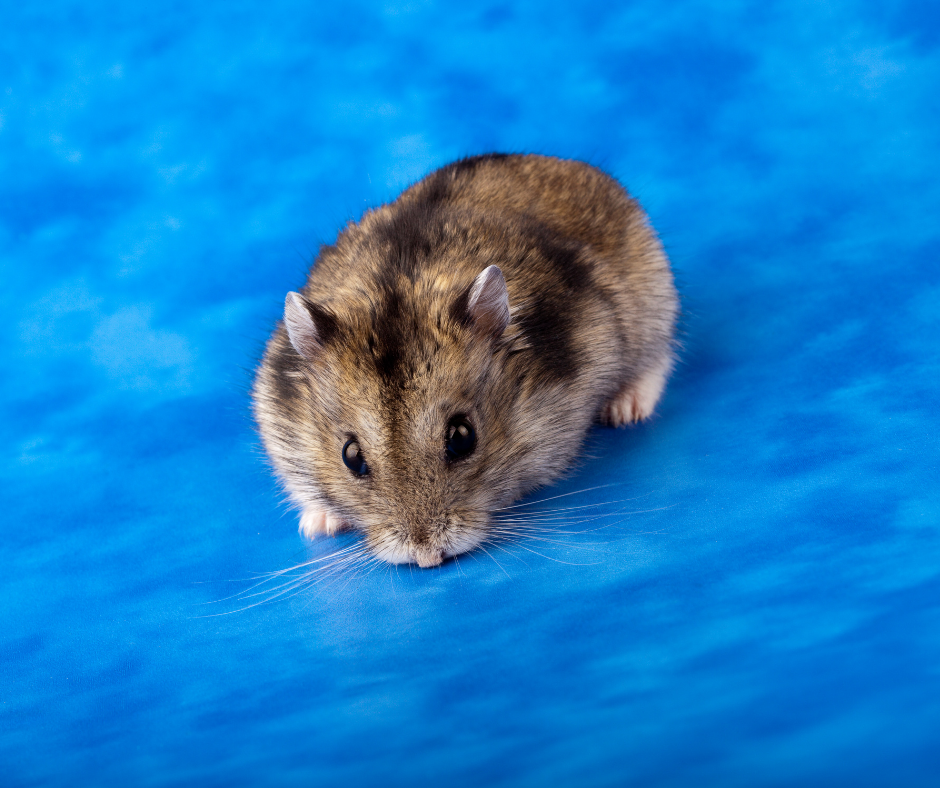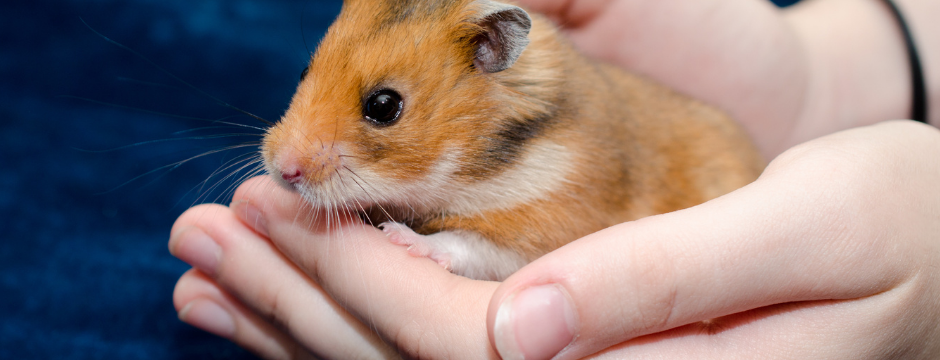Thinking of buying one of these cute little fluffballs? Or are you a hamster owner who wants to learn more about these tiny creatures? Look no further. This article will tell you anything and everything you need to know about hamsters. 🐹
Hamsters in the wild
Wild hamsters can be found throughout Europe and Asia, living in sand dunes, or at the edges of deserts. Hamsters are nocturnal creatures, which means that they live underground in burrows, only venturing out at night, as this helps them to avoid being spotted and caught by predators. Because wild hamsters are generally only out when it’s dark, they have awful eyesight, and so depend on their smell, as well as their whiskers, to get around.
In terms of diet, wild hamsters will eat a variety of different foods including grains, seeds, nuts, cracked corn, fruits and vegetables – as well as some more unusual things such as insects, lizards, frogs and other small animals.

Hamsters in hibernation
Wild hamsters will go into hibernation if the weather becomes cold, only waking up every so often to eat. In order to do this, they have to accumulate food stores in their burrows to last them the whole hibernation period, which means they can only hibernate when they are able to gather a sufficient amount of food.
Hamster’s life expectancy
Wild hamsters generally don’t live as long as pet hamsters, and the average age for a pet hamster is around two to three years.
Types of hamsters
There are many different hamster breeds that come in all shapes and sizes. Below are some of the most popular types of pet hamsters:
- Syrian:
Syrians are arguably the most well-known hamster breed, these hamsters are larger than the dwarf hamster types, with adults usually measuring around 15cm from head to tail, and they come in variety of colours with the most common being golden brown. The Syrian hamster life expectancy is generally longer than other hamster breeds, with some hamsters living up to four years.
In terms of Syrian hamster behaviour, this type of hamster is solitary and should always be housed alone. However, although these hamsters aren’t social with each other, they can still enjoy interacting with their owners, and are reported to be one of the breeds that are less likely to bite. They are also inquisitive and generally quite gentle-natured, making them more suitable for careful handling and keeping as a pet.
- Dwarf Roborovski:
This type of hamster is one of the smallest hamster breeds, only reaching around 5cm in length as a fully grown adult. The Roborovski hamster lifespan is normally around two years, and they come in a variety of colours, the most common being a sandy brown with a white belly. If you’re wondering if Dwarf Roborovskis can live together, the answer is that – although they are more likely to accept a companion than their Syrian cousins, they still aren’t the most sociable of animals. This means that, although it is possible to house this breed in pairs or small groups, they should always be properly introduced, and for more advice on this, speak to your local pet shop expert. All individuals housed together must also be the same sex, and from the same breed. Roborovskis are also very quick on their feet, which means they don’t always make great pets (especially for young children) as they can easily become lost or injured.
- Campbell’s Dwarf Russian:
These hamsters can grow up to 10cm long and can live to around two years old. They have grey-brown fur with a white belly and dark brown stripes along their back. As with the Roborovski Russian hamster breed, these hamsters can be kept in pairs or small groups so long as all individuals are the same breed and sex, and are properly introduced. And, in terms of behaviour, this breed is often quick and prone to nipping so they’re not ideal as pets, particularly for young children.
- Dwarf Winter White Russian:
This breed looks similar to the Campbell’s Dwarf breed, and they also grow up to 10cm in length and live up to two years. Their colouring is also fairly similar, but the Winter White’s fur can turn white during the winter (hence their name). Also, the Winter White Russian generally has a shorter face than the Campbell dwarf.
This breed of hamster can be kept in same-sex groups or pairs so long as all individuals are from the same breed and are introduced properly at a young age. However, even when these hamsters are introduced, they may still turn territorial as they get older and, in these cases, it’s best for them to always be housed in separate enclosures and kept apart. The Winter White Russian is fast-moving, as with other Dwarf breeds, and more likely to bite making them less suitable as pets – especially for young children.

- Chinese:
The Chinese hamster breed is generally slightly larger than Russian Dwarf breeds, growing up to 12cm in length and living up to three years. The species are known for being more friendly and comfortable with handling then other hamster types, however, if they are not accustomed to being handled, they can also be prone to nipping. As with other dwarf hamster breeds, Chinese hamsters can be very quick, so it’s important to be careful when handling them, as they can easily slip out of hands which can be very dangerous for them.
Like the dwarf breeds, Chinese hamsters are generally sociable and like to live in same-sex pairs or groups with individuals from the same breed – so long as they are properly introduced.
Which type of hamster is friendliest?
How friendly a hamster is often depends on the individual, with some hamsters naturally being more sociable with their owners and easy to handle, whereas other individuals may have gotten used to handling because they have gotten used to being handled regularly from a young age.
However, in terms of breeds, Syrian hamsters tend to be gentler, and less likely to bite, and Chinese hamster are also generally more friendly and comfortable being held. As a general rule, dwarf hamsters are often less suitable as pets are they are generally more nervous, skittish (making them difficult to handle) and likely to bite.
So, that concludes our guide on everything you need to know about hamsters! Want to know more about these cute little creatures? Check out are article, “Your guide to choosing and cleaning a hamster cage” in the small animal section of our website.
Don’t forget to stay updated on our Facebook and Instagram pages!


